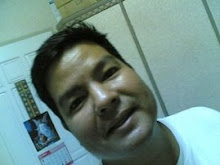Koi pond filtration, the process of removing waste products and other harmful compounds from the koi pond, is a basic requirement of koi keeping. Without koi pond filtration, several things can and will most likely happen: 1) the pond will turn green, rendering the pond fish invisible; 2) parasites and other harmful life forms will easily spread from one fish to another; 3) the pond will become unsightly and foul-smelling; 4) the pond will be poorly aerated; and worst of all, 5) the water quality can become deadly to its inhabitants, which may lead to a massive fish kill (the ultimate nightmare of every koi enthusiast).
Koi pond filtration per se is not difficult nor complicated. It can be very frustrating, time-consuming, and labor-intensive though if it is not carefully planned ahead as part of the pond system. Due to lack of advice, many koi hobby neophytes simply go ahead with the construction of their ponds with little thought about how filtration shall be set up and maintained. Subsequently each of them realizes that an important feature of the pond system is missing and has to do with a makeshift one after the fact, resulting in an underpowered filter with a fraction of the capacity that it should have.
Rule # 1, therefore, is to ensure the proper planning and setting up of the filtration system for every koi pond built. It is best to have this done while the pond is still in its planning stages as well. Taking this rule for granted will defeat the purpose of filtration - the pond will still be green and harmful to the koi even weeks after the filter has been running. It will also result in more frequent and labor-intensive cleaning of the filters. Sooner or later, the hobbyist will shell out more funds in order to correct his poor filtration set-up. This is not to mention the potential loss of expensive koi due to poor filtration.
Rule # 1, therefore, is to ensure the proper planning and setting up of the filtration system for every koi pond built. It is best to have this done while the pond is still in its planning stages as well. Taking this rule for granted will defeat the purpose of filtration - the pond will still be green and harmful to the koi even weeks after the filter has been running. It will also result in more frequent and labor-intensive cleaning of the filters. Sooner or later, the hobbyist will shell out more funds in order to correct his poor filtration set-up. This is not to mention the potential loss of expensive koi due to poor filtration.

Figure 1. The Bakki Shower: said to be the latest and
greatest in Japan when it comes to filtration
greatest in Japan when it comes to filtration
Many koi experts recommend a filter volume of not less than 33% of the total pond volume. Thus, a 3,000-gallon pond should have a filter capable of holding 1,000 gallons of pond water at any one time. Filter chambers can be costly, so not all koi enthusiasts can and do comply with this recommendation. Filters, however, should not be less than 10% of the pond volume. The smaller the filter, the more efficient the design should be.
Aside from filter chamber volume, water flow rate is another important point to consider when designing a filter. Filtering the water requires a way by which dirty water will be passed through the filters and delivered back to the pond as clean water 24 hours a day. This is achieved by using water pumps. When one speaks of the filter flow rate, what is referred to is the rate at which the pump moves the water through the filter.
Aside from filter chamber volume, water flow rate is another important point to consider when designing a filter. Filtering the water requires a way by which dirty water will be passed through the filters and delivered back to the pond as clean water 24 hours a day. This is achieved by using water pumps. When one speaks of the filter flow rate, what is referred to is the rate at which the pump moves the water through the filter.
.jpg)



























No comments:
Post a Comment